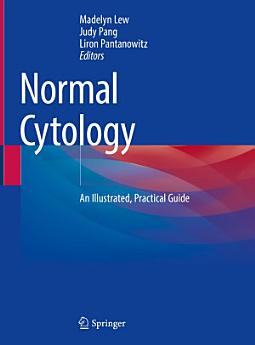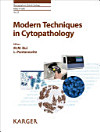Normal Cytology: An Illustrated, Practical Guide
Madelyn Lew · Judy Pang · Liron Pantanowitz
Jan 2023 · Springer Nature
Ebook
174
Pages
reportRatings and reviews aren’t verified Learn More
About this ebook
In the practice of cytopathology, cytologists frequently encounter a spectrum of benign, normal cells in samples. In fact, these normal cells frequently comprise the greatest proportion of material present on a cytology slide. This is frequently the case in Pap smears of the uterine cervix , urine samples, and lung samples such as bronchial brushings. Normal cytology can often mimic pathology leading to misdiagnoses, especially in cases with reactive and metaplastic changes. Moreover, cytopathology findings of certain neoplasms can also mimic normal cytology.
Today, cytology laboratories are no longer confined to dealing with just exfoliative specimens and superficial aspirations. With interventional radiology as well as endobronchial and endoscopic ultrasound-guided fine needle aspirations (FNA), we increasingly encounter visceral samples. Hence, cytologists are even likely to encounter normal elements from deep-seated organs. Sometimes, unexpected normalelements may be found within cytology specimens because a FNA procedure has contamination or inadvertently sampled a nearby organ or normal anatomical structure. A typical example is the finding of ganglion cells when a FNA is performed targeting a celiac node for cancer staging (Elgarby EA et al. Frequency and characterization of celiac ganglia diagnosed on fine-needle aspiration. Cytojournal. 2015; 12:4).
Despite the importance of knowing the spectrum of normal cytology, there are limited reference materials available on this topic for cytologists. Most cytopathology texts deal with abnormal cytology. Often, the chapters in these books only devote a few sentences about normal cytology (euplasia). Our proposed book intends to fulfil this need. The book will contain a mixture of text and images (atlas). Important aspects related to cytology practice will be highlighted such as clinical relevance, differential diagnoses, mimics and pitfalls. The images will include a variety of cytology specimen preparations (e.g. direct smears, liquid based samples, touch preparations, cell blocks) and stains (e.g. Diff Quik/MGG, Papanicolaou, H&E). In selected cases, the expected immunoprofile of normal cells will be addressed. Each chapter will also include a modest list of helpful and contemporary references.
Today, cytology laboratories are no longer confined to dealing with just exfoliative specimens and superficial aspirations. With interventional radiology as well as endobronchial and endoscopic ultrasound-guided fine needle aspirations (FNA), we increasingly encounter visceral samples. Hence, cytologists are even likely to encounter normal elements from deep-seated organs. Sometimes, unexpected normalelements may be found within cytology specimens because a FNA procedure has contamination or inadvertently sampled a nearby organ or normal anatomical structure. A typical example is the finding of ganglion cells when a FNA is performed targeting a celiac node for cancer staging (Elgarby EA et al. Frequency and characterization of celiac ganglia diagnosed on fine-needle aspiration. Cytojournal. 2015; 12:4).
Despite the importance of knowing the spectrum of normal cytology, there are limited reference materials available on this topic for cytologists. Most cytopathology texts deal with abnormal cytology. Often, the chapters in these books only devote a few sentences about normal cytology (euplasia). Our proposed book intends to fulfil this need. The book will contain a mixture of text and images (atlas). Important aspects related to cytology practice will be highlighted such as clinical relevance, differential diagnoses, mimics and pitfalls. The images will include a variety of cytology specimen preparations (e.g. direct smears, liquid based samples, touch preparations, cell blocks) and stains (e.g. Diff Quik/MGG, Papanicolaou, H&E). In selected cases, the expected immunoprofile of normal cells will be addressed. Each chapter will also include a modest list of helpful and contemporary references.
About the author
Madelyn Lew, MDMichigan Medicine Department of Pathology2800 Plymouth Rd, Bldg 35Ann Arbor, MI 48109Tel: (734)936-6622
Judy C. Pang, MDMichigan Medicine Department of Pathology2800 Plymouth Rd, Bldg 35Ann Arbor, MI 48109Tel: 734-232-0251
Liron Pantanowitz, MD PhD MHAMichigan Medicine Department of Pathology2800 Plymouth Rd, Bldg 35Ann Arbor, MI 48109Tel: 413-237-4397
Rate this ebook
Tell us what you think.
Reading information
Smartphones and tablets
Install the Google Play Books app for Android and iPad/iPhone. It syncs automatically with your account and allows you to read online or offline wherever you are.
Laptops and computers
You can listen to audiobooks purchased on Google Play using your computer's web browser.
eReaders and other devices
To read on e-ink devices like Kobo eReaders, you'll need to download a file and transfer it to your device. Follow the detailed Help Center instructions to transfer the files to supported eReaders.




